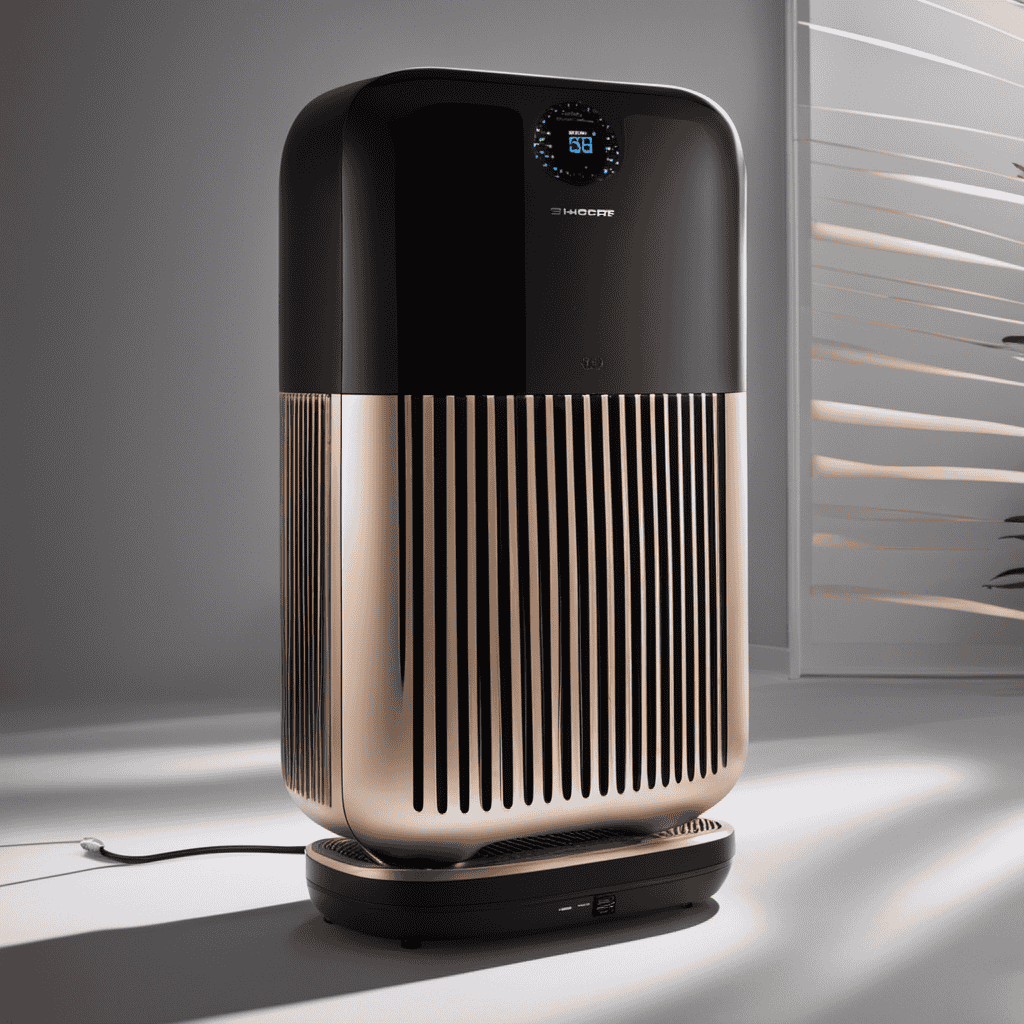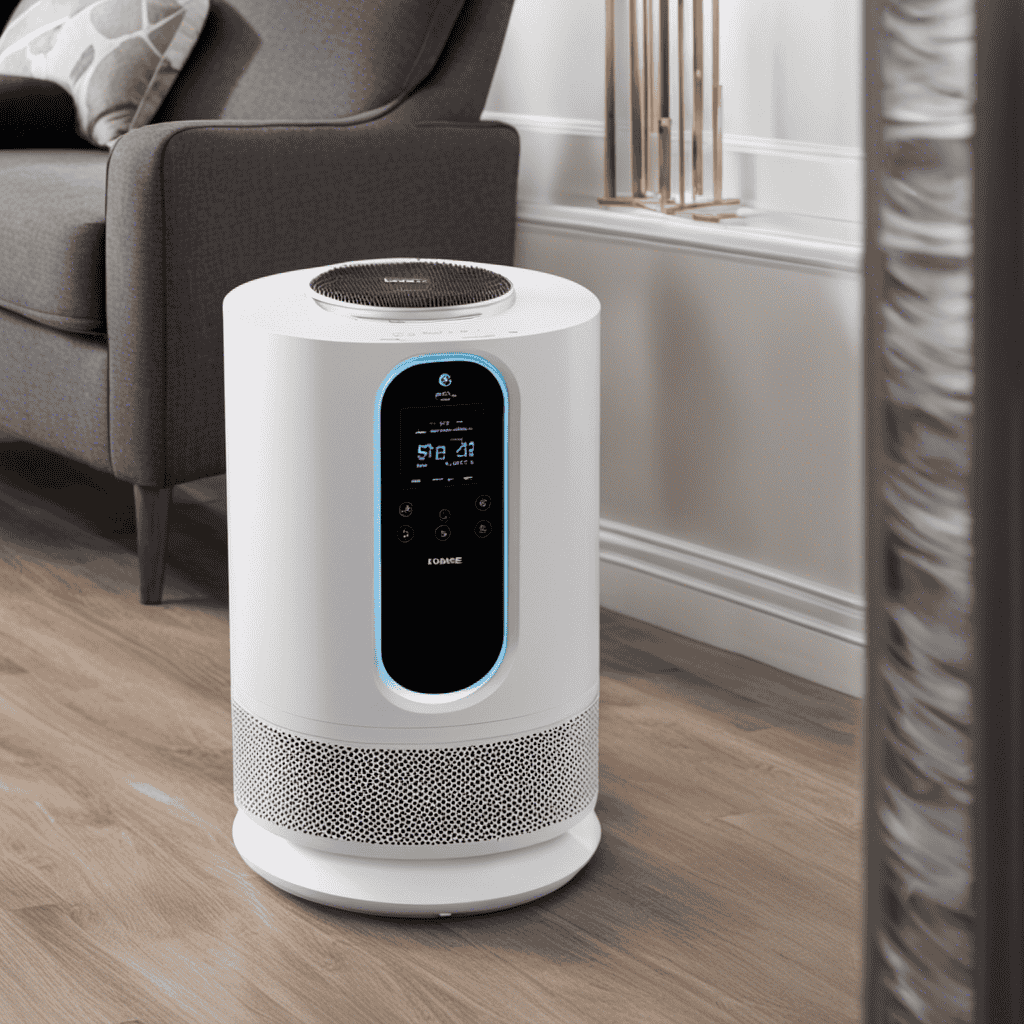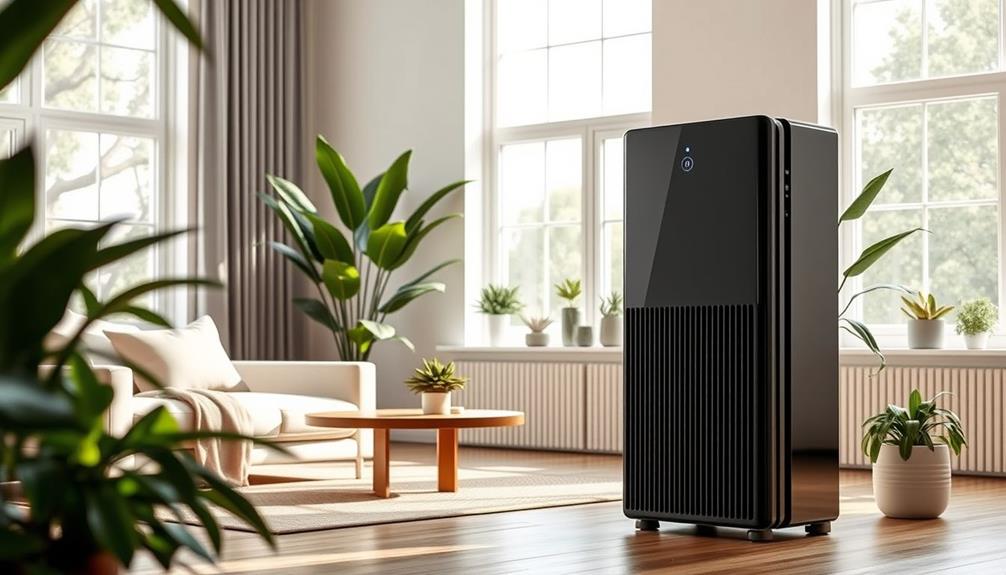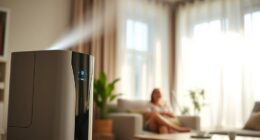As a specialist in air quality, I frequently receive questions regarding the significance of the term ‘ion’ in air purifiers. Therefore, what does ion truly signify?
Well, let’s delve into the world of ionization technology and its role in air purification. In this article, I will provide a comprehensive understanding of how ionizers work, the benefits they offer, and address common misconceptions surrounding ionization.
By the end, you’ll have the knowledge to choose the right air purifier with an ionization feature for your needs.
So, let’s get started!
Key Takeaways
- Ionization technology in air purifiers helps remove airborne contaminants by electrically charging particles in the air.
- Ionizers release ions into the air that attach to pollutants, making them heavier and easier to remove through regular cleaning.
- Ionizers can significantly improve overall air quality by reducing the concentration of harmful particles such as dust, pollen, and smoke.
- It’s important to choose an air purifier with low ozone emissions and that meets safety standards to minimize potential health risks.
Understanding Ionization Technology
If you’re wondering what ionization technology means on an air purifier, it’s a process that helps remove airborne contaminants by electrically charging particles in the air.
Ionization technology works by producing negative ions, which attach to positively charged particles, such as dust, pollen, and smoke, causing them to become heavier and fall to the ground.
This can be beneficial in removing these particles from the air and improving indoor air quality.
However, it’s important to consider the pros and cons of ionization technology.
While it can effectively remove certain pollutants, it may also produce ozone, a harmful gas that can irritate the lungs and worsen respiratory conditions.
Additionally, some studies have suggested that high levels of negative ions may have negative health effects, such as increased asthma symptoms.
Therefore, it’s crucial to weigh the benefits and potential risks of ionization technology before using it in air purifiers.
Benefits of Ionizers in Air Purifiers
One of the benefits of using ionizers in air purifiers is that they help to remove pollutants and allergens from the environment. Ions, which are charged particles, play a crucial role in air purification. When an ionizer releases these ions into the air, they attach to airborne particles like dust, pollen, and pet dander. This process is known as ionization. The charged particles then become too heavy to remain airborne and eventually settle on surfaces, making them easier to remove through regular cleaning.
Numerous studies have shown the effectiveness of ionizers in reducing indoor air pollution. These devices have been found to significantly decrease the concentration of harmful particles, improving the overall air quality.
Transitioning into the subsequent section about ‘how ionizers work in air purifiers,’ let’s explore the mechanism behind this process.
How Ionizers Work in Air Purifiers
Let’s delve into how ionizers function in air purifiers and their impact on air quality. Ionizers are a key component of air purifiers that help to improve the overall air quality by releasing ions into the air. These ions are charged particles that attach themselves to airborne pollutants, such as dust, pollen, and pet dander. The process of ionization creates an electrostatic charge, causing the pollutants to become attracted to surfaces in the room, such as walls or furniture, where they can be easily cleaned or vacuumed.
However, it is important to consider the pros and cons of ionizers. While they can effectively remove certain types of pollutants from the air, they can also produce ozone as a byproduct, which can be harmful to health when present in high concentrations. It is crucial to choose an air purifier with a low ozone emission level to minimize potential health risks.
To illustrate the pros and cons of ionizers, here is a table summarizing their advantages and disadvantages:
| Pros of Ionizers | Cons of Ionizers |
|---|---|
| Effectively remove certain pollutants from the air | Can produce ozone as a byproduct |
| Can help improve air quality in smaller spaces | Ozone can be harmful to health when present in high concentrations |
| Have low energy consumption compared to other air purifier technologies | Ozone emissions can contribute to the formation of outdoor smog |
| Can be combined with other air purification technologies for enhanced effectiveness | Some ionizers may generate small amounts of negative ions, which could potentially cause respiratory irritation in sensitive individuals |
Common Misconceptions About Ionization
There’s a common misconception that ionizers always produce harmful ozone, but in reality, many modern models have low ozone emissions.
As an air quality specialist, I can provide you with accurate definitions and explanations regarding ions in air purifiers. Ions are charged particles that can help improve air quality by attaching to airborne particles and making them heavier, causing them to settle out of the air.
However, there are some negative effects and safety concerns associated with ionization. High levels of ozone can be harmful to human health and can cause respiratory issues.
It is important to choose an air purifier with ionization feature that has low ozone emissions and meets safety standards. By considering the air purifier’s ozone output and selecting a reputable brand, you can ensure that you are making a safe and effective choice for improving indoor air quality.
Choosing the Right Air Purifier With Ionization Feature
To ensure you select the right air purifier with ionization, it’s important to consider the level of ozone emissions and safety standards of each model.
As an air quality specialist, I can provide you with accurate definitions and explanations using scientific terminology.
Ions, in the context of air purifiers, are charged particles that are either positively or negatively charged. These ions are released into the air by the purifier and attach themselves to airborne particles, such as dust or pollen. The process of ionization helps to remove these particles from the air, improving the overall air quality.
However, it’s crucial to note that not all air purifier brands have the same level of ionization effectiveness. It is essential to review studies, experiments, and data to determine the effectiveness of ionization in a particular air purifier model.
Frequently Asked Questions
Are Ionizers Safe to Use in Air Purifiers?
Ionizers in air purifiers have pros and cons. While they can improve indoor air quality by removing particles, they can also release ozone, which can be harmful. It’s important to consider safety guidelines and choose a purifier with low ozone emissions.
Can Ionizers Remove All Types of Air Pollutants?
Ionizers on air purifiers are effective against common household odors. When comparing to other air purification technologies, ionizers can remove certain types of pollutants, but may not be as efficient as other methods for comprehensive purification.
Do Ionizers Produce Any Harmful Byproducts?
Ionizers on air purifiers produce ions, which are charged particles that help remove airborne pollutants. However, long-term exposure to these ions may have potential health effects, and the environmental impact on indoor air quality should be considered.
How Long Do Ionizers Last Before They Need to Be Replaced?
When it comes to the longevity of ionizers, signs of replacement needed may include reduced ion output, decreased air purification effectiveness, or malfunctions. Regular maintenance and monitoring are essential for optimal performance.
Can Ionizers Help With Allergies and Asthma?
Ions, found in air purifiers, are touted for their effectiveness in reducing allergens and asthma triggers. However, it’s important to consider potential side effects. As an air quality specialist, I provide unbiased, research-based information to help you make informed decisions.
Conclusion
In conclusion, ionization technology is a powerful tool in improving indoor air quality. By releasing negative ions, ionizers attract and neutralize airborne particles, effectively removing pollutants and allergens. This process not only cleans the air but also creates a fresher and healthier environment.
However, it is important to note that ionizers should be used in conjunction with other air purification methods for optimal results. So, next time you consider an air purifier, remember the enlightening power of ionization. It can transform your indoor air into a pristine sanctuary.










